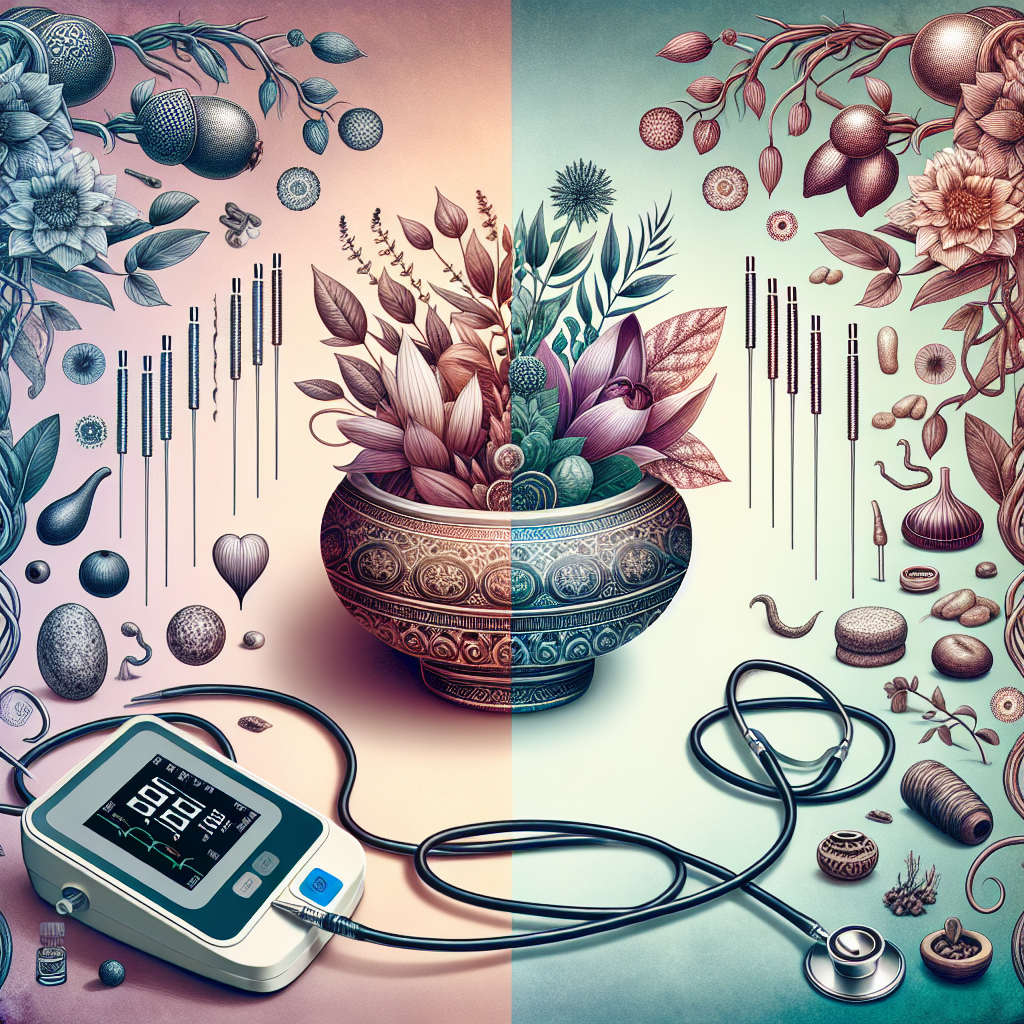Balancing Blood Pressure: Integrating Western Medical Advancements with Eastern Healing Traditions
High blood pressure, or hypertension, is a significant health concern worldwide, affecting millions of people. It is often called the “silent killer” because it can lead to serious health issues, including heart disease, stroke, and kidney failure, without presenting noticeable symptoms. Managing and treating high blood pressure requires a comprehensive approach that may benefit from both Western medical advancements and Eastern healing traditions. This article explores the different treatment perspectives and how they can be integrated for a holistic approach to managing high blood pressure.
Western Medical Approach to High Blood Pressure
Western medicine typically addresses high blood pressure with a combination of lifestyle modifications and medication. The primary goal is to prevent the long-term complications of hypertension by lowering blood pressure to a safe range.
Lifestyle Modifications
Western doctors often recommend lifestyle changes as the first line of defense against high blood pressure. These include:
– Diet: Adopting a heart-healthy diet that emphasizes fruits, vegetables, whole grains, lean protein, and limits saturated fats, cholesterol, and sodium.
– Physical Activity: Engaging in regular physical activity, such as 150 minutes of moderate exercise per week.
– Weight Management: Maintaining a healthy weight or losing weight if overweight.
– Limiting Alcohol and Tobacco Use: Reducing the intake of alcohol and quitting smoking.
Medications
If lifestyle modifications are insufficient, medications become necessary. The most common classes of drugs used to treat high blood pressure include:
– Diuretics: Help the kidneys remove excess sodium and water from the body.
– ACE Inhibitors: Relax blood vessels by blocking the formation of a chemical that narrows them.
– Calcium Channel Blockers: Prevent calcium from entering heart and blood vessel cells, thus relaxing the blood vessels.
– Beta Blockers: Reduce heart rate and the output of blood, lowering blood pressure.
The choice of medication depends on the individual’s overall health, the severity of hypertension, and the presence of other conditions.
Eastern Healing Traditions and High Blood Pressure
Eastern healing traditions, including Traditional Chinese Medicine (TCM), Ayurveda, and others, take a holistic approach to treating high blood pressure, focusing on balancing the body’s energies and restoring health through natural means.
Traditional Chinese Medicine (TCM)
TCM views hypertension as a symptom of an imbalance in the body’s natural energy flow, or Qi. Treatment methods include:
– Acupuncture: Involves the insertion of fine needles into specific points on the body to restore Qi balance and reduce blood pressure.
– Herbal Remedies: Uses a combination of herbs to strengthen the body’s organs and improve their function.
– Tai Chi and Qigong: Mind-body practices that combine gentle movements, meditation, and breathing exercises to improve overall health and lower blood pressure.
Ayurveda
Ayurveda, an ancient Indian healing system, identifies three fundamental bodily energies (doshas): Vata, Pitta, and Kapha. Hypertension is often seen as an imbalance of these doshas, and treatment focuses on diet, lifestyle changes, and herbal remedies to restore balance.
– Diet and Lifestyle: Recommendations are made based on the individual’s dominant dosha, including specific foods to eat or avoid and daily routines to promote balance.
– Herbal Remedies: Utilizes a variety of herbs known to promote heart health and reduce blood pressure.
– Yoga and Meditation: Encouraged as practices to reduce stress, improve physical health, and balance the doshas.
Integrating Western and Eastern Approaches
The integration of Western and Eastern approaches offers a more comprehensive strategy for managing high blood pressure. This integrated approach can provide the immediate benefits of Western medicine in controlling blood pressure while leveraging Eastern practices to improve overall well-being and address the root causes of hypertension.
– Combining Medications with Lifestyle Changes: Patients can take prescribed medications while also adopting the dietary and exercise recommendations from TCM or Ayurveda.
– Incorporating Stress-Reduction Techniques: Stress is a common contributor to high blood pressure. Combining Western treatment with Eastern stress-reduction techniques like meditation, Tai Chi, or yoga can provide dual benefits.
– Personalized Treatment Plans: An integrated approach allows for more personalized care, considering the patient’s unique health profile and preferences. This might involve using TCM to identify specific energy imbalances and customizing treatment with acupuncture or herbal remedies, alongside conventional medical monitoring and intervention.
Conclusion
High blood pressure is a complex condition that benefits from a multifaceted treatment approach. By integrating the precision and advancements of Western medicine with the holistic and natural focus of Eastern healing traditions, individuals can manage their blood pressure more effectively. This integration not only addresses the immediate health concern but also improves overall well-being, offering a promising path for those seeking to balance their blood pressure and enhance their quality of life. As always, it’s crucial for individuals to consult with healthcare professionals before starting any new treatment regimen, especially when integrating different therapeutic approaches.

